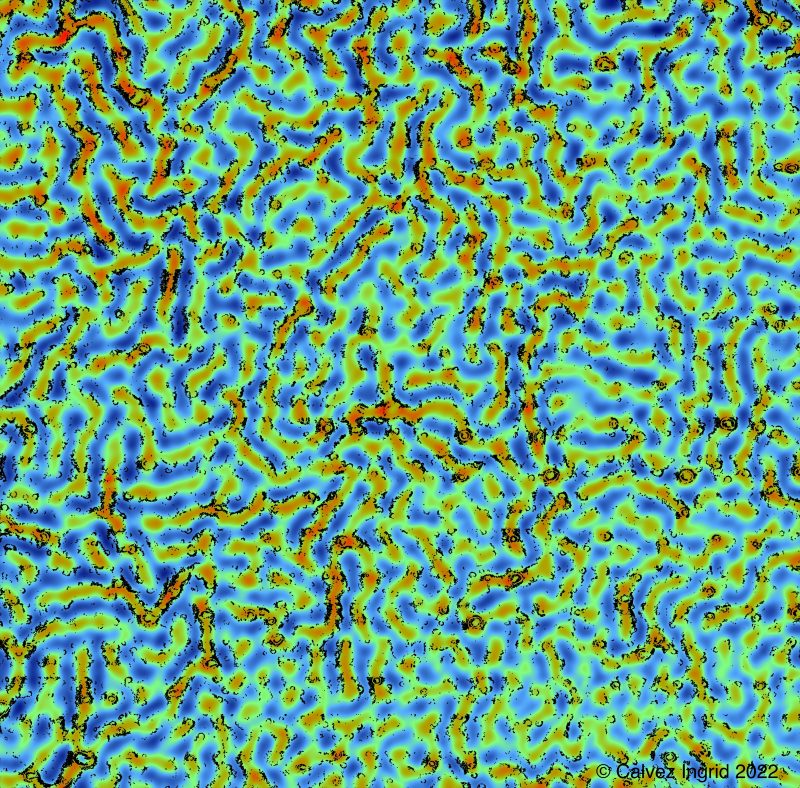Le labyrinthe/ The labyrinth

Ingrid Calvez, Groupe de Véronic Landry (Chaire de recherche CRSNG-Canlak), Image de profilométrie optique 3D Bruker Contour GTI
Venez découvrir ce qu’il se cache derrière la finition de votre couvre-plancher en bois. La profilométrie optique 3D permet l’analyse de surface sans contact de divers matériaux. Dans mon projet, j’analyse la surface de vernis à apparence mate pour nos couvre-plancher. L’objectif est d’analyser la surface de mes revêtements pour la relier à sa caractéristique optique (p. ex. la brillance). Grâce à cet appareil, nous pouvons réaliser des analyses morphologiques tridimensionnelles de nos matériaux. Ces données nous permettent d’obtenir les divers paramètres de rugosité nécessaire à la compréhension de nos surfaces. Le labyrinthe que vous pouvez observer ici, a été obtenu par la formation d’ondulation de surface d’un système polymère. Les zones en bleu représentent des creux et les zones en rouge/vert des pics. C’est cette architecture de surface qui conduit à une surface de très faible brillance. Alors, arriverez-vous à sortir de ce labyrinthe ?
—————————————-
Come and discover what happens behind the finish of your wood floor. 3D optical profilometry allows non-contact surface analysis of various materials. In my project, I am analyzing the surface of matte varnish for our wood flooring. The objective is to analyze the surface of my coatings in order to relate it to its optical characteristic (e.g. gloss). With this equipment, we can perform three-dimensional morphological analysis of our materials. These data allow us to obtain the various roughness parameters necessary to understand our surfaces. The labyrinth that you can observe here, is obtained by a wrinkling mecanism of a polymeric system. The blue areas represent valleys and the red/green areas represent peaks. It is this surface architecture that leads to a very low gloss surface. So, will you be able to find your way out of this labyrinth ?
